#CLOUDS COMPUTING
Explore tagged Tumblr posts
Text
SOFTCRAYONS cloud computing training
Softcrayons is the best place for newcomers and seasoned pros to receive training. For those just starting, we have training programs focusing on getting you a kick-start career approach.
We have the best online summer training program in Noida, and our trainers are experts in their fields. Students are given real-world experience through our program's hands-on exercises, assignments, and mock interviews.
When choosing the best institute for cloud computing training in Noida, consider factors such as course curriculum, hands-on experience, faculty expertise, industry partnerships, placement assistance, and reviews from past students. It's also beneficial to check if the institute offers certifications from leading cloud providers, as these can enhance your credibility in the job market.

0 notes
Text


#was looking through my old computer and found some gifs#and omg I’m hella proud of this little gifset#it turned out perfectly#it’s from Winnie the Pooh of anyone was wondering#cottagecore#my gifs#Winnie the Pooh#rain#books#animation#rain aesthetic#gifset#book aesthetic#light acadamia aesthetic#book academia#clouds#storm#nostalgia#nostalgiacore#gif
11K notes
·
View notes
Photo
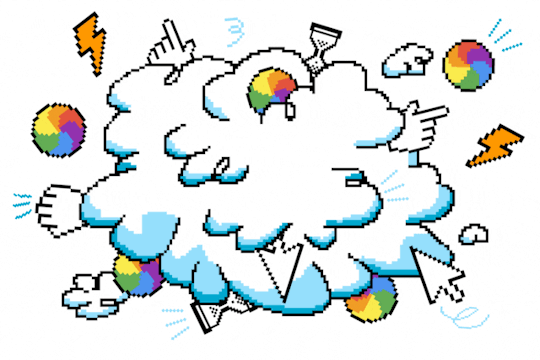
Dev Valladares
8K notes
·
View notes
Text
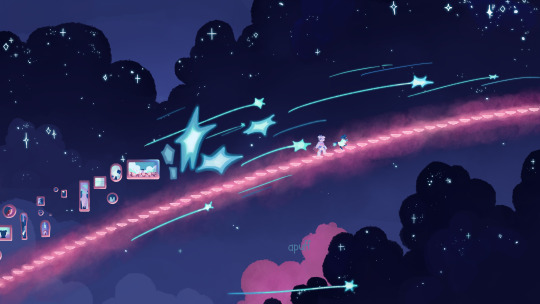
my piece for the laika's zine
#this too meh. FOREVAH#it looks good though so#also my computer kept lagging because of the file size lmao...the layers shudders#art#artists on tumblr#digital art#fanart#webcomic fanart#laika's comet#furry#space#comet#clouds#stars#celestial#spacecore#desktop wallpaper#background#wallpaper
682 notes
·
View notes
Text

#Computer#Ocean#Water#Surreal#Digital art#Keyboard#Mouse#Glass#Reflection#Sky#Clouds#Monitor#Sea#Fantasy#Futuristic#Technology#Nature#Creative#Imaginative#Desktop#Drink
307 notes
·
View notes
Text

Meme redraw OG Rayman prefers to choose kindness whenever he can...
V.2 :

But sometimes, you gotta send a message.
#...that's the second time I draw a relatively pacifist cartoonish character choosing violence in the span of 2 years#and he's purple themed too...kinda#uh#it's not much but it's weird it happened twice#oh well#ramon#rayman#it's been a struggle with those pictures bc guess what#I had to format the computer#and I *thought* I had all my CSP materials backed up in a file#but apparently they changed the placement of the material files without a warning and I didn't back up jack on the cloud#I have a few brushes I had put aside just in case and did well to do so#but all the brush and presets I've created are gone...color palettes included#i am an adult i am not going to cry#back up your material files kids#don't be like me#meme
1K notes
·
View notes
Text









a stimboard for my beloved anya mouthwashing 🩵
📘-🩻-📘 / 🩻-📘-🩻 / 📘-🩻-📘
#stim#stimboard#mouthwashing#anya mouthwashing#sfw#blue#black#gray#grey#white#teal#medical#pills#space#stars#fake blood#iv bags#cats#kitties#animals#snow#nature#page flipping#hands#clouds#computers#technology#snowing#gloves#medicine
240 notes
·
View notes
Text
Media Preservation Monday
Yeah, yeah, as of this original post it's actually only Wednesday but hey, take this as a sign to take some initiative, and keep to it each Monday at minimum if you're actively writing!
What's Media Preservation Monday, you may ask?
MPM is your reminder to back up your writing at least three ways at least once a week or whenever you make major changes to your document(s).
Here's some incredibly easy ways to back up your writing:
One your Master Document(s), put a date on the file name, and every day you make changes, "Save As" the Document and change the date. Do this every time or day you make major changes.
Example: You start writing your Novella November Story on November 1st.
You name your master document "Novnov Project 11-01-2024"
The next day, you write some more, and at the end of your writing session, you go to save your document, and instead of simply hitting "Save" you choose "Save As" and save the new copy of the Document as "Novnov Project 11-02-2024".
You now have two copies of your project, and if you keep this up throughout the whole month, you will have a live snapshot of your writing progress.
Each day or after each major writing session, open up the folder containing your document, and back it up. The Easiest and simplest way to do this is to simply email it to yourself, but you can also create multiple backups by:
Save a copy of your dated Master Document(s) to different locations on your Hard-drive, to an external hard-drive, to a thumbdrive, etc.
If you're writing offline on a writing program like Libreoffice, upload a copy of your Master Document(s) to your preffered Cloud-based Writing Program of your choice.
Vice Versa: if you write on a Cloud-based writing program, download it to various offline-based locations.
Download the base document as well as download it as various ebook formats and send them to your ebook library on your phone or kindle or nook or reading app.
Make a personal discord server and upload the document/epub form of your Master Document(s) there [this is also a good way of making a kind of personal journal / diary etc]
Whatever you do, do not be complacent and assume nothing can happen to your writing. Back it up. Preserve it.
Don't have all of your hard work go down the drain because of one tiny unforeseen accident.
When it comes time to clean up your hardrive, always assume you don't have it backed up. Before deleting anything always take the time to copy it over to another physical drive or a cloud drive.
#media preservation monday#writing tips#writing advice#novella november#writing events#community events#don't lose everything because you're a kid in school with a school laptop#and the tech support people tell your parent to factory reset the laptop without explaining that will wipe everything#don't lose everything because a cat jumped on your computer desk and knocked your desktop to the ground#don't lose everything because someone tripped and threw a bucket of water over your computer#don't lose everything because you totally thought you have it saved in two locations and delete it only to realize that was all of it#I'm trying to think of more scenarios#don't lose everything because your computer got a virus and ransomeware encrypted all your documents#If you had to leave your home tomorrow without your computer would you have access to your writing?#If not BACK IT UP#It should be in at least two places on the cloud at minimum and preferably multiple places offline#as many backups as you can get
287 notes
·
View notes
Text

BSOD v2 Sunset Clouds
#cyberpunk#bsod#netart#vaporwave#technology#computing#retro#nostalgia#windows xp#windowsxp#pop art#ai generated photo#openai#v a p o r w a v e#digital art#a e s t h e t i c#sunset#clouds#photoshop#warakami
399 notes
·
View notes
Text
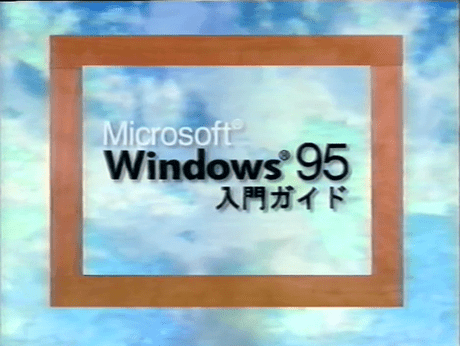
425 notes
·
View notes
Text
The flotsam and jetsam of our digital queries and transactions, the flurry of electrons flitting about, warm the medium of air. Heat is the waste product of computation, and if left unchecked, it becomes a foil to the workings of digital civilization. Heat must therefore be relentlessly abated to keep the engine of the digital thrumming in a constant state, 24 hours a day, every day. To quell this thermodynamic threat, data centers overwhelmingly rely on air conditioning, a mechanical process that refrigerates the gaseous medium of air, so that it can displace or lift perilous heat away from computers. Today, power-hungry computer room air conditioners (CRACs) or computer room air handlers (CRAHs) are staples of even the most advanced data centers. In North America, most data centers draw power from “dirty” electricity grids, especially in Virginia’s “data center alley,” the site of 70 percent of the world’s internet traffic in 2019. To cool, the Cloud burns carbon, what Jeffrey Moro calls an “elemental irony.” In most data centers today, cooling accounts for greater than 40 percent of electricity usage.
[...]
The Cloud now has a greater carbon footprint than the airline industry. A single data center can consume the equivalent electricity of 50,000 homes. At 200 terawatt hours (TWh) annually, data centers collectively devour more energy than some nation-states. Today, the electricity utilized by data centers accounts for 0.3 percent of overall carbon emissions, and if we extend our accounting to include networked devices like laptops, smartphones, and tablets, the total shifts to 2 percent of global carbon emissions. Why so much energy? Beyond cooling, the energy requirements of data centers are vast. To meet the pledge to customers that their data and cloud services will be available anytime, anywhere, data centers are designed to be hyper-redundant: If one system fails, another is ready to take its place at a moment’s notice, to prevent a disruption in user experiences. Like Tom’s air conditioners idling in a low-power state, ready to rev up when things get too hot, the data center is a Russian doll of redundancies: redundant power systems like diesel generators, redundant servers ready to take over computational processes should others become unexpectedly unavailable, and so forth. In some cases, only 6 to 12 percent of energy consumed is devoted to active computational processes. The remainder is allocated to cooling and maintaining chains upon chains of redundant fail-safes to prevent costly downtime.
521 notes
·
View notes
Text

USA 1993
94 notes
·
View notes
Photo



Killers
#dark cloud#dungeon siege#killzone#legend of zelda#Diablo#Halo#psm#computer games magazine#gamepro#retro gaming#(game) killer
424 notes
·
View notes
Text
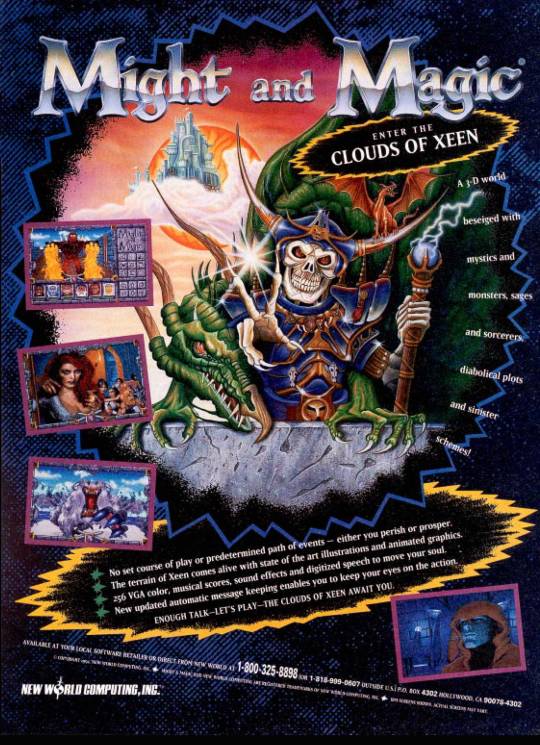
Enter the Clouds of Xeen -- Ad for DOS RPG game Might and Magic IV: Clouds of Xeen by New World Computing, Inc, in Dragon magazine 188, December 1992
#Might and Magic#Might and Magic IV#Clouds of Xeen#undead#dragon#Xeen#Might and Magic IV: Clouds of Xeen#Dragon magazine#cloud castle#floating castle#flying castle#computer game#game ad#DOS#DOS game#New World Computing#fantasy castle#1990s
74 notes
·
View notes
Text
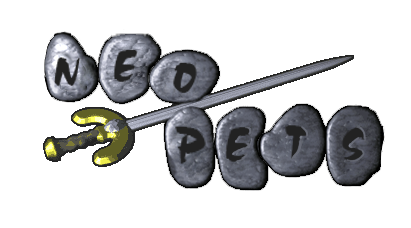
I had my artistic epiphany this month and made the worst thing I Possibly Could Have. Any of you may use this as you see fit.
#neopets#runescape#logo design#old web#computer#human evolution all culminates to this moment#this brilliant sliver of time where all is frozen and we see a supernova just beginning#the blink of an eye where gravity is simply too strong and the force of it creates something beautiful. something new.#you look through the dizzying suspended clouds of dust and gas. your eyes sparkle. there it is.#neopets runescape logo
108 notes
·
View notes
Text

Today’s Daily Degurechaff is… pony tanya, on your dashboard once again
#dailydegurechaff#id apologize but im not sorry#in my head a pony au would basically just be MLP with different nations and comp. orbs#computation orbs in this verse are devices that allow earth ponies and pegasi to cast magic like unicorns#so flight mages are orb-equipped pegasi#no need for unicorns to cast complicated wing spells or require clouds to take position
64 notes
·
View notes